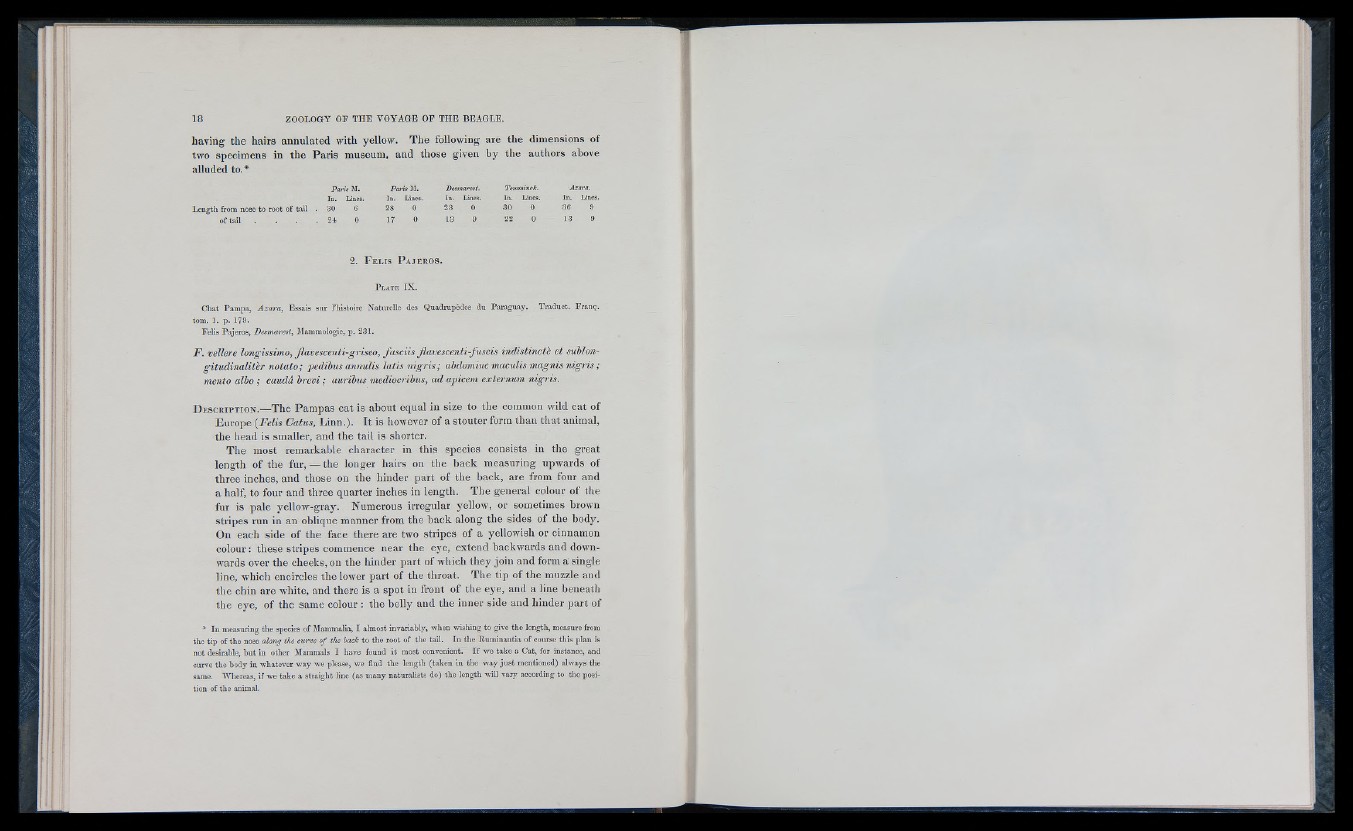
having the hairs annulated with yellow. The following are the dimensions of
two specimens in the Paris museum, and those given by the authors above
alluded to.*
Length from nose to root of tall
of tail
Paris M.
Ib. Lines.
30 6
2-1 0
Paris M.
In. Lines.
28 0
17 0
Desmarest.
In. Lines.
23 0
13 9
Temminck.
In. Lincs.
30 0
22 0
In. Lines.
36 9
13 9
2 . F e l is P a j e r o s .
P l a t e IX .
Chat Pampa, A za ra, Essais sur I’lilstoire Naturelle des Quadrupèdes du Paraguay. Traduct. Franç.
tom. 1. p. 179.
Felis Pajeros, Desmarest, Mammologie, p. 231.
F. vellere longissimo, jlavescenti-griseo, fasciis Jlavescenli fuscis indistinctè et subion-
g'itudinalitèr uotato; pedibus amiulis latis nigris; abdomine maculis magnis nigris ;
mento albo ; caudâ brevi ; auribus mediocrihus, ad apicem externum nigris.
D e s c r i p t i o n .— The Pampas cat is about equal in size to the common wild cat of
Europe (Felis Catus, Linn.). It is liowever of a stouter form than that animal,
the head is smaller, and the tail is shorter.
The most remarkable character in this species consists in tlie great
length of the fur, — the longer hairs on the back measuring upwards of
three inches, and those on the hinder part of the hack, are from four and
a half, to four and three quarter inches in length. The general colour of the
fur is pale yellow-gray. Numerous irregular yellow, or sometimes brown
stripes run in an oblique manner from the hack along the sides of the body.
On each side of the face there are two stripes of a yellowish or cinnamon
colour : these stripes commence near the eye, extend backwards and downwards
over the cheeks, on the hinder part of which they join and form a single
line, which encircles the lower part of the throat. The tip of the muzzle and
the chin are white, and there is a spot in front of the eye, and a line beneath
the eye, of the same colour : the belly and the inner side and hinder part of
* In measuring the species of M ammalia, I almost invariably, when wishing to give the length, measure from
the tip of the nose along the curve of the hack to the root of the tail. In the R um inantia of course this plan is
not desirable, bu t in other Slammals I have found it most convenient. If wo take a Cat, for instance, and
curve the body in whatever w ay we please, we find the length (taken in the way just mentioned) always the
same. V’hereas, if we take a straight line (as many naturalists do) the length will vary according to the position
of the animal.